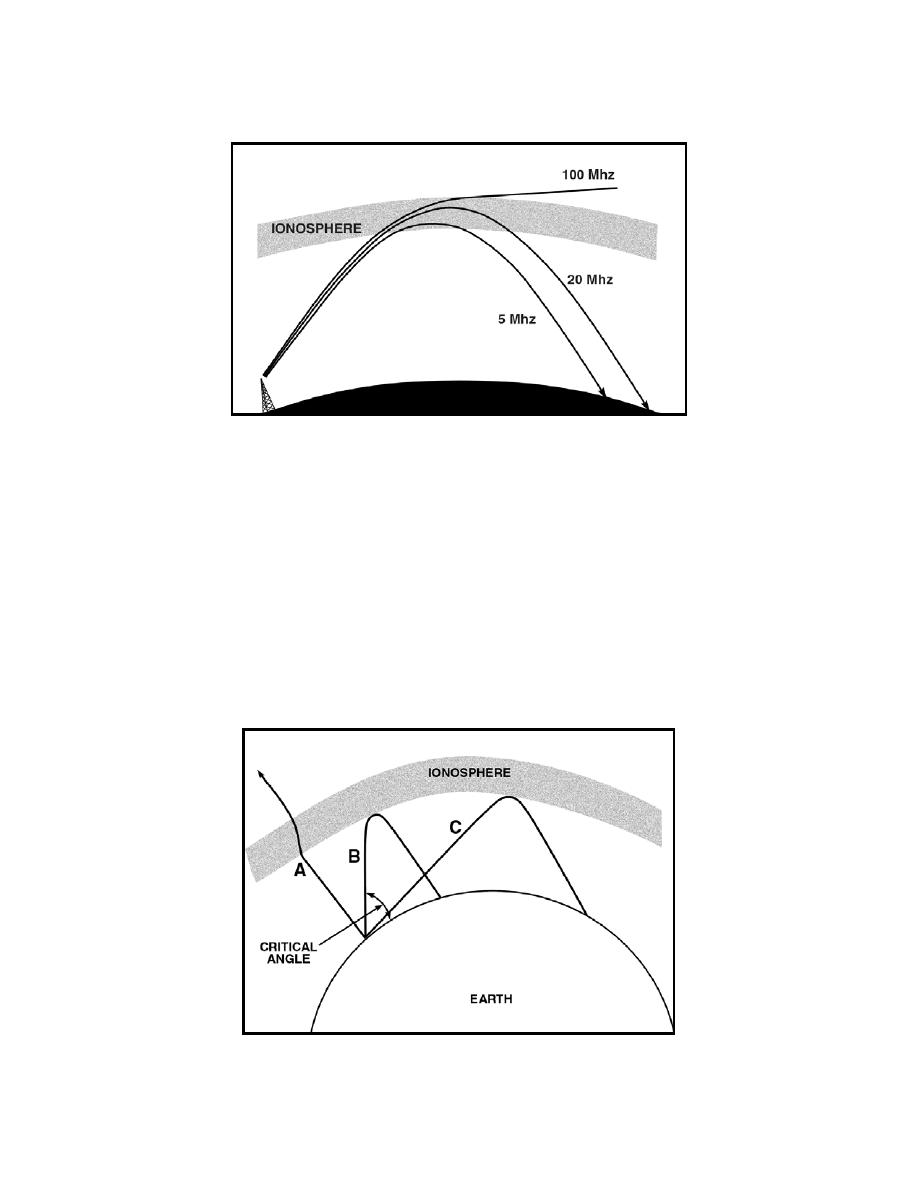
__________________________________________________________ Radio Wave Propagation
Figure 2-16. Frequency Versus Refraction and Distance
Angle of Incidence
2-68. The rate at which a wave of a given frequency is refracted by an ionized
layer depends on the angle at which the wave enters the layer. Figure 2-17
shows three radio waves of the same frequency entering a layer at different
angles. The angle at which wave A strikes the layer is too nearly vertical for
the wave to be refracted to Earth. As the wave enters the layer, it is bent
slightly but passes through the layer and is lost. When the wave is reduced to
an angle that is less than vertical (wave B), it strikes the layer and is
refracted back to Earth. The angle made by wave B is called the critical angle
greater than the critical angle will penetrate the ionospheric layer for that
frequency and then be lost in space. Wave C strikes the ionosphere at the
smallest angle at which the wave can be refracted and still return to Earth.
At any smaller angle, the wave will be refracted but will not return to Earth.
Figure 2-17. Different Incident Angles of Radio Waves
2-23



 Previous Page
Previous Page
